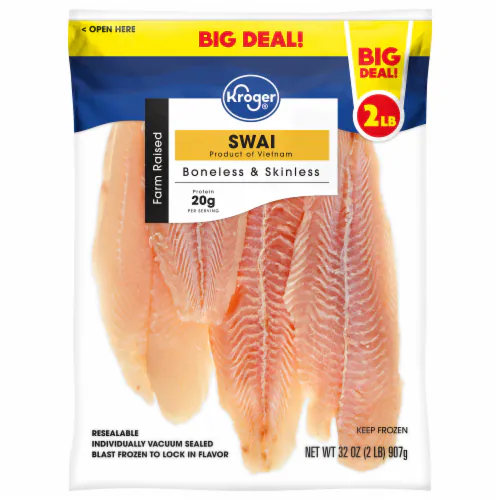If you are reading this, you likely love seafood. The kind of seafood to buy, however, is a choice primarily driven by taste, texture, and price. The last one is pretty important, considering the flood of cheaper imported seafood in supermarkets these days. If you gravitate towards cheaper options such as swai/basa, tilapia, or milkfish, you should know that almost all of these are farmed in unsustainable—and sometimes toxic—environments in Asia. Overproduction, poor quality, and possible health risks from high levels of mercury are just some of the problems to start with.
The Hidden Costs of Cheap Seafood
The global seafood industry has undergone a dramatic shift in recent decades. What was once a market dominated by locally caught, wild fish is now flooded with farmed imports, often produced under questionable conditions. Countries like Vietnam, China, and Thailand have become major exporters of inexpensive seafood, but their farming practices raise serious concerns:
- Polluted Waters & Antibiotic Overuse: Many fish farms operate in overcrowded, unsanitary conditions, leading to rampant disease. To combat this, farmers often use excessive antibiotics, which can end up in the food chain and contribute to antibiotic resistance in humans.
- Environmental Destruction: Mangrove forests, crucial for coastal ecosystems, are frequently cleared to make way for shrimp and fish farms. This not only devastates local biodiversity but also removes natural barriers against storms and floods.
- Mislabeling & Fraud: A 2019 Oceana report found that up to 20% of seafood tested globally was mislabeled, with cheaper species being passed off as premium ones. This deception makes it even harder for consumers to know what they’re really eating.
Health Risks Lurking in Your Seafood
While affordability is a major selling point for imported farmed fish, the long-term health implications are concerning:
- Mercury & Heavy Metals: Industrial runoff contaminates water sources, leading to fish accumulating heavy metals like mercury, which can cause neurological damage over time.
- Chemical Contaminants: Some farmed fish are treated with preservatives like formaldehyde (a known carcinogen) to extend shelf life—practices that are banned in many Western countries but still occur in unregulated markets.
- Lower Nutritional Value: Wild-caught fish generally have higher levels of omega-3 fatty acids, while farmed fish (raised on cheap feed like soy and corn) often contain less beneficial nutrients.
What Can We Do?
The situation isn’t hopeless, but making better seafood choices requires awareness and effort:
- Buy Local & Wild-Caught: Whenever possible, opt for locally sourced, wild-caught seafood. Not only is it often healthier, but it also supports sustainable fishing practices.
- Check Certifications: Look for labels like MSC (Marine Stewardship Council) or ASC (Aquaculture Stewardship Council), which indicate responsibly sourced seafood.
- Avoid the Worst Offenders: Fish like swai, basa, and imported tilapia are among the most problematic. Instead, consider alternatives like sardines, mackerel, or Alaskan salmon, which are more sustainable and nutritious.
- Demand Transparency: Ask supermarkets and restaurants about the origins of their seafood. The more consumers push for accountability, the more the industry will be forced to improve.
The True Price of Cheap Seafood
The next time you’re tempted by a bargain on imported shrimp or tilapia, remember: the low-price tag often hides a much higher cost—to your health, the environment, and global food safety. By making informed choices, we can push back against the tide of unsustainable seafood and demand better quality, transparency, and ethical practices in the industry.
Your plate, your health, and the planet’s future depend on it.
